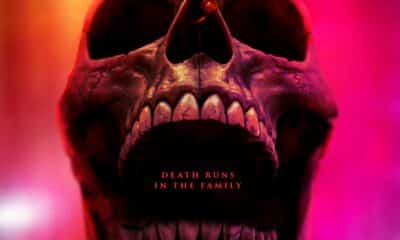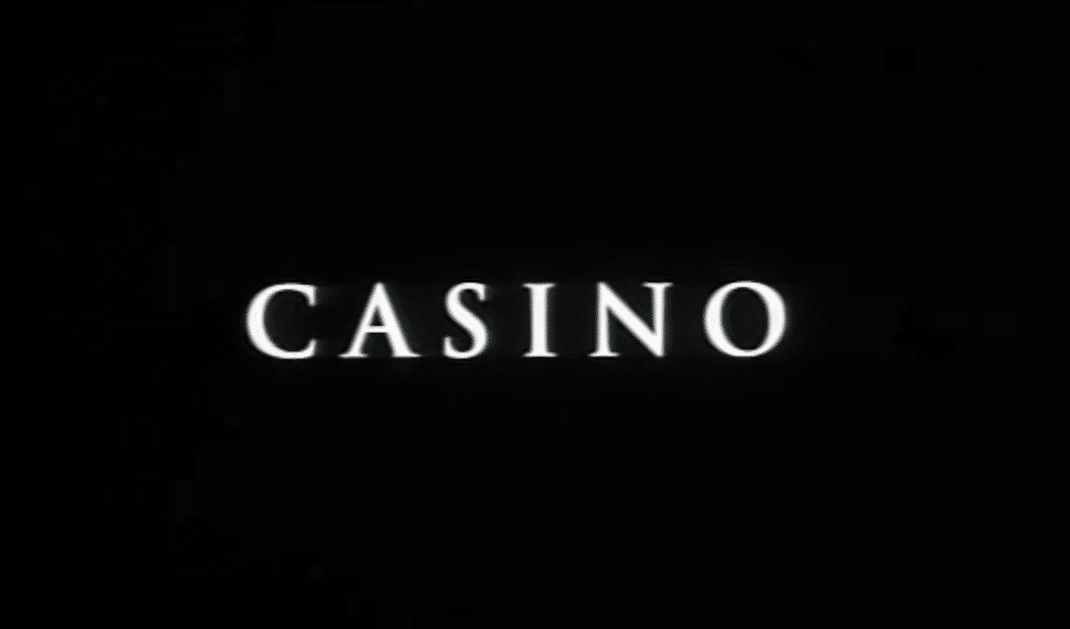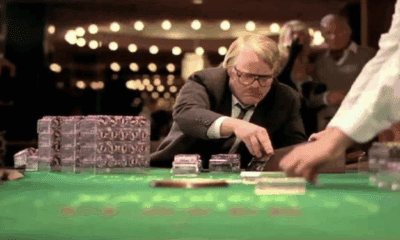If BAFTA could hand out an award for oddest movie, it would surely be won by THE BOXTROLLS, which is the latest animated offering from Laika, producers of CORALINE and PARANORMAN. This tale of a society dictated by cheese and overrun by cardboard-wearing creatures was in the running for Best Animated Film.
We spoke to directors Anthony Stacchi and Graham Annable to chew the fat, or at least the rind, over what went into the making of this eccentric chapter in the history of stop motion animation. I’m a huge fan of the medium – my Dad used to be such an animator back in the day – and I was interested to hear what the pair had to say about the project, which appears defiantly old-fashioned in this age of CGI…
THN: There’s a British flavour to the film, coming from the source novel (Here Be Monsters by Alan Snow), then you’ve got the actors…
Anthony Stacchi: The whole recipe!
Were there any aspects of British culture you looked at when you were putting THE BOXTROLLS together?
AS: As soon as we read the book we always pitched it as OLIVER TWIST as if it was made by Monty Python. That was always the tone we were going for from the very beginning, and that dictated everything after that. So when we started looking for the cast Travis Knight (CEO of Laika) never bought the fact that we kept bringing to him English comedians and actors. In fact he insisted that we keep trying to get Sir Ben Kingsley to play Snatcher, whereas I always felt he’d never done animation before. I was sure he had been asked and he must have not wanted to do it… so we were really thrilled when he agreed to do it.
Graham Annable: Both Tony and I feel really lucky to have gotten the cast we did… A lot of other American studios probably wouldn’t have allowed us to go for the people we did, just because it was primarily very English.
AS: And then, it’s really funny, about half our crew… even though it’s in Portland Oregon, are English. Stop motion has such a bigger presence here than in the American animation world.
How did Eric Idle come to be involved?
GA: When we knew we needed a song for Madame Fru Fru we thought ‘Why not reach out to one of the Pythons?’. Just for the heck of it, maybe there’s a chance… We thought we’d push our luck, and ask Eric Idle if he was interested, and lo and behold he was.
He said he was really attracted to the amount of depth and themes he read in the script, and so he was very interested in seeing whether he could crack the song for us… One of the coolest times working on this project was listening to Eric Idle playing live with his guitar, the song he’d just written like two days previous from our conversation… hearing his voice coming out of the little conference phone in our story room… It was just kind of surreal, as like all of us I’ve grown up on LIFE OF BRIAN and THE MEANING OF LIFE.
The cast you’ve got is quite eclectic, from Ben Kingsley to Elle Fanning. How was it working with a wide range of vocal talents?
AS: When we spoke to Ben Kingsley on the phone we were hoping that he would tend towards Don Logan from SEXY BEAST… and he went there himself immediately in the phone call…
Then the first time I met him, we flew over there, we always recorded him in the town where he lived, in Chipping Norton… he came in and said he wanted to record reclining in a chair, which is exactly the opposite thing you would ever ask an actor to do because it changes their voice. But he had this concept from looking at the artwork, because Snatcher has such a big, gluttonous belly, that he wanted the voice to come out of his stomach in a way that would help if he reclined. And he’s a pretty intimidating guy to meet, so I wasn’t going to argue with him… As soon as he started doing the lines, elongating every vowel and putting in that Cockney accent and stuff it was just perfect.
GA: Elle was really a friend of the studio. Her sister Dakota had done the voice for CORALINE and we’d always had her at the back of our minds, trying to think of a role for her that would fit. And it just so happens she’d just finished doing GINGER AND ROSA and she’d done – at least to our ears – an impeccable English accent, and we thought she’d be perfect for Winnie.
The tone of the movie is very dark, and you’ve got some elements that a Hollywood producer would see as problematic. Did you face any roadblocks over some of the more unconventional material like kids eating bugs and the cross-dressing?
GA: I worked as a story artist on CORALINE and PARANORMAN… So honestly, relative to those films, BOXTROLLS feels like the lightest fare we’ve ever done at Laika! We felt we were making a pretty light film. But we’re in a unique situation as they really are an independent animation studio, and I know we are lucky enough to be sort of considered in the same depths of water as Disney and Dreamworks and Pixar and all the big boys but we really are a much smaller studio.
And the creative advantage of that, I feel, having worked on all three films, is we get to make the films we want to make. We don’t do much focus testing of any kind. And so we have ourselves and Travis, and some checks and balances of where we go with the stories and the things we do.
The cross-dressing in the movie, that originated from Alan’s book – Fru Fru is a character in that book and we really wanted to find a way to incorporate that into our story… Creatively I feel lucky that we are able to pursue things other studios might balk at.
Tell me about a “typical” day on the set. For example, in the scene where the Boxtrolls first emerge onto the streets at night, it’s very detailed, there’s a lot happening in the foreground and background… What goes into making a sequence like that?
AS: Each individual shot gets one animator, regardless of how many Boxtrolls are in there, so in that little sequence there’s simple shots where just one or two Boxtrolls appear in a manhole, or their shadows appear on a wall… So our cameraman John Ashley came up with a way of… a lot of times when you do shadows in a show like this, it’s difficult to actually do it in a real way, of using the characters to cast their shadows, you would hand draw those shadows. But John came up with a way where we could actually animate the characters off screen, so they’d cast shadows onto the set.
So unlike any other form of animation where you do lots of iterations in the animation… the animator does a few drawings, then he tests it… then he adds a few drawings more, or in CG you pose the character on the computer then you look at that… in stop motion it’s really much more like a theatrical performance. The animators get one rehearsal where they do it… they only get one shot… because from the beginning to the end you can’t go back and fix stuff… So much more than any other form of animation the animators are really like actors…
For me I’d worked in stop motion before but I’d mostly done CG animation – that was terrifying, because you knew they may take a week to do the shot, but once they began that was it, and you got what you got at the end of it.
The faces are very distinctive in the film. Where did you take inspiration from for them and how did you achieve the wide variety of expressions and fluid facial movements?
GA: Something that never really happens in stop motion animation very often is we’ve kept the same core group of artists together for all three films, and the departments have just gotten more refined and more robust with each film… One area where you really do see and feel that a lot is our RP (Rapid Prototype) department that handles all the facial animation…
When we did CORALINE, utilizing 3D printers for the first time, we couldn’t print and colour, we still had to handpaint each of Coraline’s faces, and that certainly dramatically reduces the amount of detail and faces we could actually use. By the time we’ve gotten to THE BOXTROLLS now, those faces come out fully-printed in colour, and we knew we could really push into areas we hadn’t been before in terms of the complexity of colour in there…
We were influenced by a lot of Lucian Freud paintings, by that amalgamation of colours that don’t up front maybe make a lot of sense, but they work together great… we wanted a very theatrical quality to all the puppets’ faces… but even we were a little nervous we might have gone too far with the amount of colour we did push into the faces. Brian McLean – the Head of our RP department – assured us he was up to the challenge and he could make it work and he did. There’s never been puppets in stop motion that have looked this sophisticated for the amount of colour in their faces.
[Were/Are] you looking forward to the BAFTAs?
GA: Yes! I’m still pinching myself at the amount of nominations we’ve received. It’s just incredible to be honoured this way… As anyone in animation knows you spend so long making these films and you really shouldn’t be in this industry if your end goal is to be at these award shows, because for the amount of effort put forth you don’t know what attention you’re going to receive. So for all the hard work put into it by everybody at the studio, to be here now, in London for the BAFTAs… it’s just incredibly exciting.
And to bring it back to the place that inspired it.
GA: Totally. This awards ceremony in particular is a huge honour. I’m Canadian, Tony’s American, so for us to be making a movie that was primarily British and have it accepted at this level… it’s a great honour.
What’s next for you both, animation or otherwise?
AS: I’ve been developing some other projects… and they had been developed for different forms of animation. None of them seem appropriate anymore now that I know that stop motion seems so much better.
If you look at the end title sequence where we see Travis animating Nick Frost and Richard Ayoade, where you see him actually touching the puppet… that gets such an amazing response out of the crowd, where they suddenly realize that the whole film was made that way, and they can see the scale… We always sneak in at the end of the movie during Q & As to watch the crowd’s reaction to that. So I’m trying to think of a new project that could exploit that a little bit more.
GA: For me personally I came from the story department, I worked on storyboards… And it was a wild, exciting ride to co-direct THE BOXTROLLS with Tony, but I kind of feel like I’m gonna roll up my sleeves and probably head back to the story department for another round, kind of assess what happened to me. (Laughs)
Continuing the theme of stop motion animation, fewer and fewer films seem to be made that way. What do you say to those who argue it may be too labour intensive, or that you can achieve similar results quicker with CGI?
AS: That’s my wife. She’s sitting right here, she often tells me ‘You know they can do this with computers nowadays.’ (Laughs)
I think there’s something about the look of stop motion that’s definitely the part of the medium that the people who do it love… even people who don’t know exactly how it’s done, they know it looks different. Subconsciously people know these are real objects that really exist, and that are moving, that there’s real light striking on their costumes and the sets are really built. There’s something you get from the image that you don’t get from CG. I mean, CG stuff has this cold, dust-free, superclean, sharp look to it, and they add motion blur and so many others things to make it look more realistic. Whereas in stop motion there’s no motion blur, each frame is pristine and crisp.
Deep down most of the people in our audience remember playing with dolls, or playing with a model train set, playing with something real and animating it themselves, bringing it to life. This sort of reaches out and it brings that memory back to people… that has a fascination in and of itself. And I think in some ways sometimes stop motion has this inherent creepy quality to it, since it is real objects moving by themselves… you always have that… slightly strange quality.
The first movie that made an impression on me was the original KING KONG. Most of it’s live action but there’s that gorilla. You can see the fingerprints on all its motions. You can see where the animator touched the fur… that always lent it a real dreamlike quality that I really loved. So I think despite all the new technology – rapid prototype printing, high definition cameras – that that quality to it still exists in the animation we do.
THE BOXTROLLS is out now on DVD and Blu-ray. THE LEGO MOVIE won Best Animated Film.
Steve is a journalist and comedian who enjoys American movies of the 70s, Amicus horror compendiums, Doctor Who, Twin Peaks, Naomi Watts and sitting down. His short fiction has been published as part of the Iris Wildthyme range from Obverse Books.

Latest Posts
-


Netflix
/ 4 minutes agoMeet Tony Tony Chopper in first look at ‘One Piece’ season 2
Netflix has unveiled a new look at One Piece season two. including a first...
By Paul Heath -
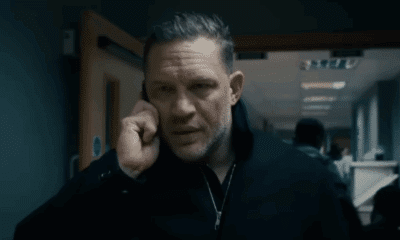

Streaming
/ 13 minutes agoWill there be a ‘Mobland’ season 2?
I’ve just literally finished episode ten of the first season of Mobland. The brilliant...
By Paul Heath -
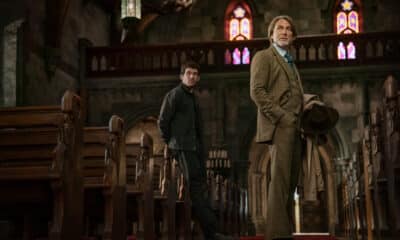

Film News
/ 14 minutes ago‘Wake Up Dead Man: A Knives Out Mystery’ gets a TUDUM teaser trailer
As part of the 2025 TUDUM Netflix event in LA over the weekend, a...
By Paul Heath -
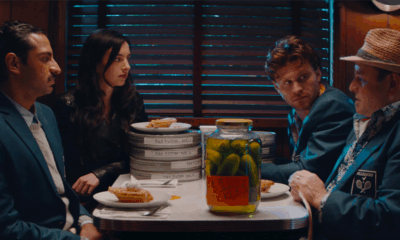

Film News
/ 15 minutes ago‘Stealing Pulp Fiction’ trailer lands ahead of stateside release
Check out this new trailer for the film Stealing Pulp Fiction which premiered earlier...
By Paul Heath








